What Sensors Should Sellers Focus on in Smartwatches and Fitness Trackers?
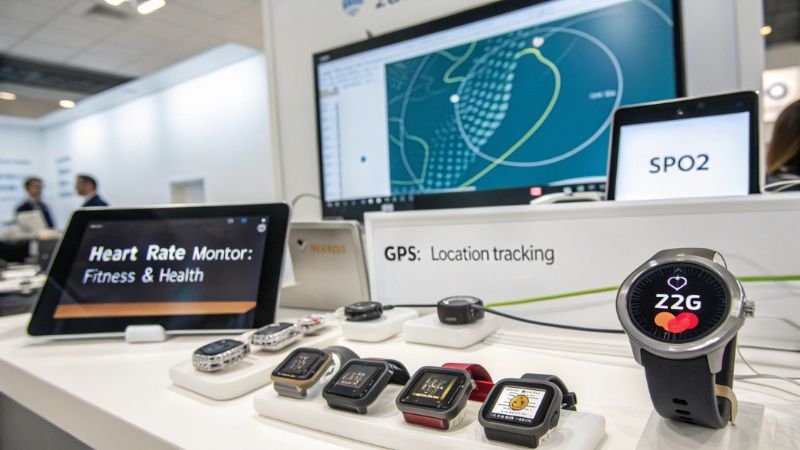
As a smartwatch and fitness tracker seller, choosing the right sensors to focus on can significantly boost your sales and meet the diverse needs of your customers. But with so many options available, where should you start?
Focusing on essential sensors like heart rate monitors, accelerometers, gyroscopes, GPS, SpO2, temperature sensors, and ECGs can enhance your product offerings and attract a broader customer base.
Understanding which sensors to prioritize is key to staying competitive and meeting market demands. Let’s dive deeper into the most impactful sensors that can drive your sales forward.
What Are the Key Sensors in Smartwatches and Fitness Trackers That Drive Sales?
Sensors1 are the heart and soul of smartwatches and fitness trackers. They not only enhance functionality but also meet the specific needs of different user groups, driving sales and customer satisfaction.
The key sensors include heart rate monitors, SpO2 sensors, accelerometers, gyroscopes, GPS, temperature sensors, and ECGs. Each plays a crucial role in delivering a comprehensive user experience.
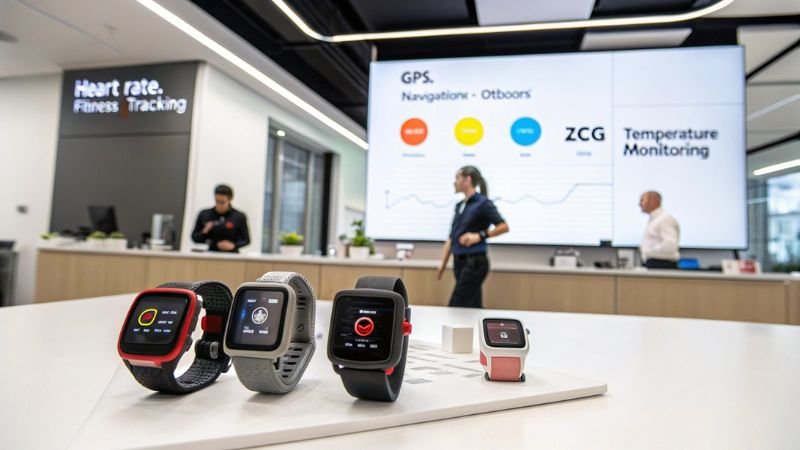
Essential Sensors and Their Impact
Understanding the role of each sensor can help you tailor your product offerings to better meet customer needs.
Heart Rate Monitors
Heart rate monitors2 are fundamental for tracking cardiovascular health and optimizing workouts. They provide real-time data that helps users stay within their target heart rate zones, ensuring effective and safe exercise routines.
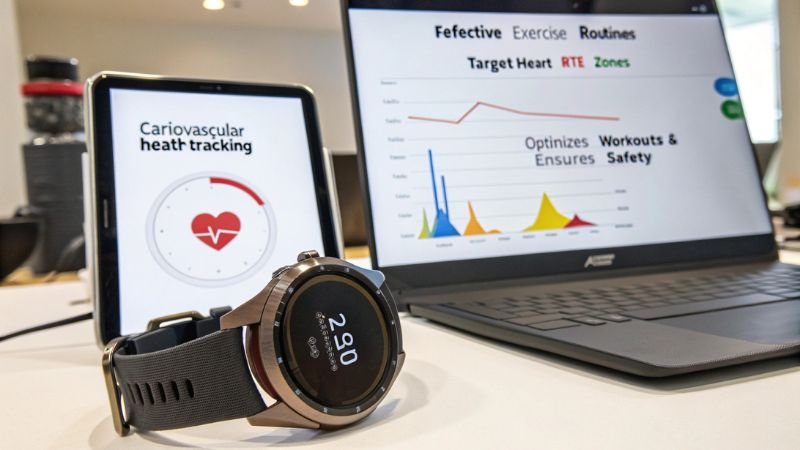
SpO2 Sensors
SpO2 sensors3 measure blood oxygen levels, offering insights into respiratory health and overall wellness. This feature is increasingly popular among fitness enthusiasts and health-conscious individuals.
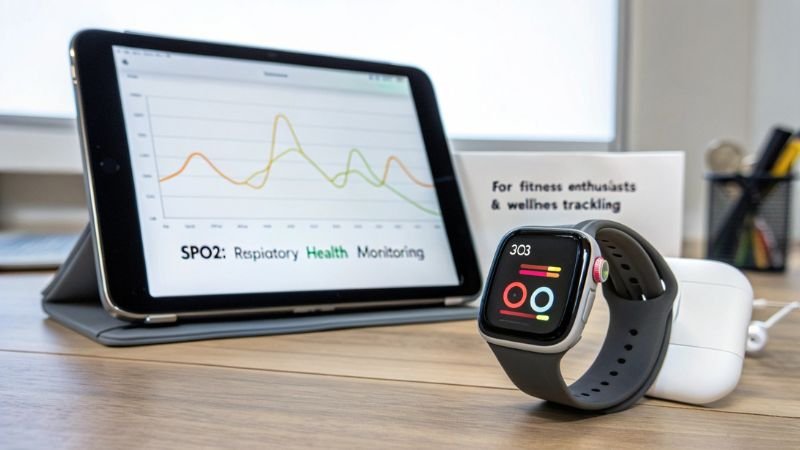
Accelerometers and Gyroscopes
These sensors track movement, orientation, and acceleration4, enabling accurate step counting, activity recognition, and motion tracking. They are essential for providing detailed fitness analytics.
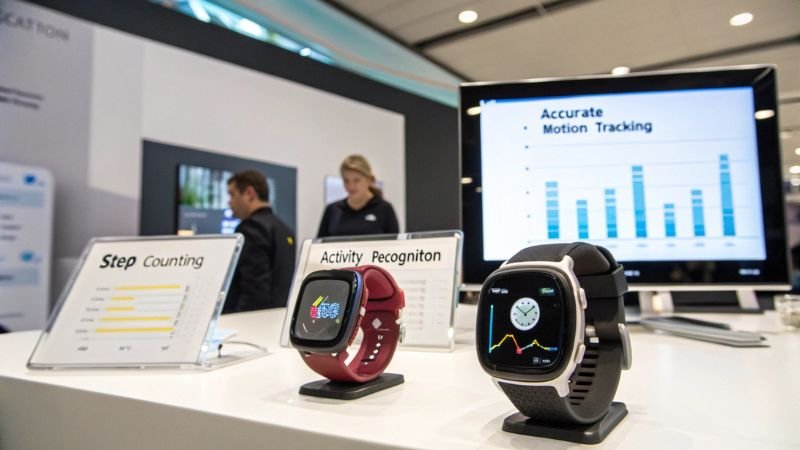
GPS
GPS sensors5 provide precise location tracking, essential for outdoor activities like running, cycling, and hiking. They enable route mapping, distance tracking, and performance analysis.
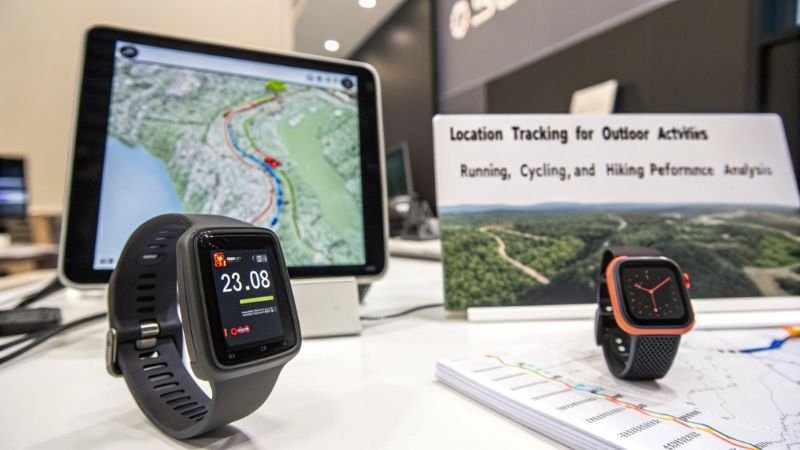
ECG Sensors
ECG sensors6 detect electrical activity in the heart, identifying irregular heart rhythms and providing advanced health monitoring capabilities. This feature differentiates premium smartwatches and appeals to tech-savvy customers.
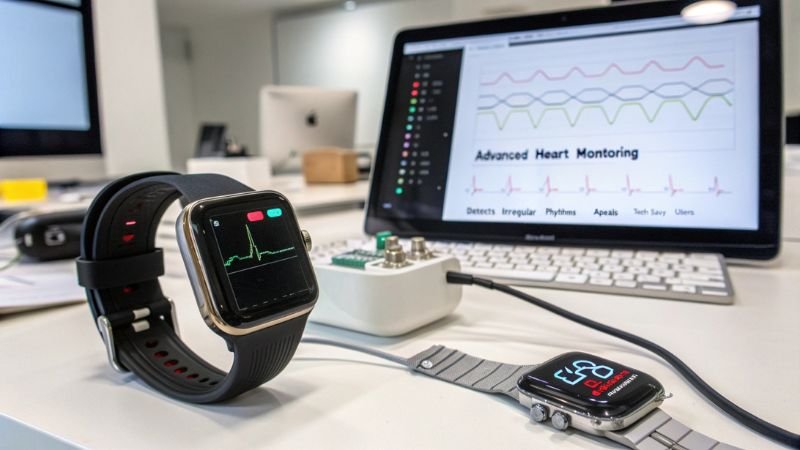
How Do Heart Rate Sensors Add Value for Health-Conscious Buyers?
Heart rate sensors are more than just a feature; they are a vital tool for health-conscious individuals seeking to monitor and improve their cardiovascular health.
Heart rate sensors provide continuous monitoring of heart activity, helping users optimize their workouts, track their fitness progress, and detect potential health issues early on.
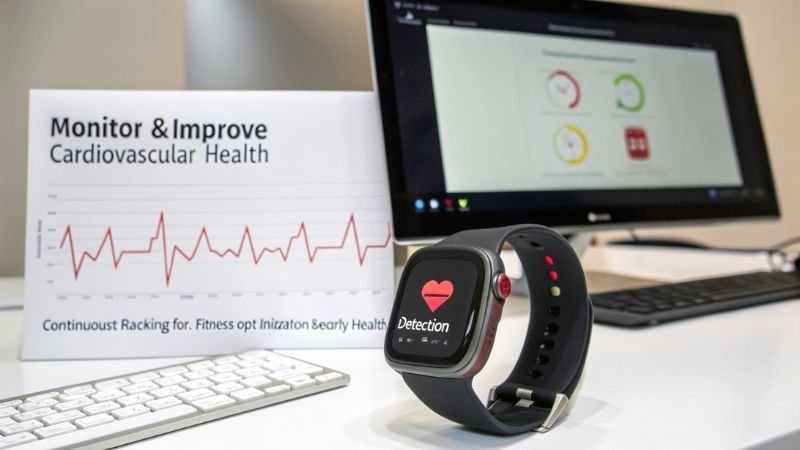
Enhancing User Experience with Heart Rate Monitoring
Heart rate sensors offer numerous benefits that resonate with health-conscious buyers. Here’s how they add value:
Workout Optimization
By monitoring heart rate in real-time, users can ensure they are exercising within their optimal heart rate zones7. This maximizes calorie burn, improves cardiovascular health, and prevents overexertion.
Health Monitoring
Continuous heart rate tracking can help detect irregular heartbeats or other potential health issues8. Early detection allows users to seek medical advice promptly, making the smartwatch a critical health tool.
Personalized Fitness Plans
Heart rate data enables personalized fitness plans9 tailored to individual needs and goals. This customization enhances the user’s workout efficiency and overall fitness journey.
Stress Management
Heart rate sensors can also monitor stress levels10 by tracking heart rate variability. This helps users manage stress through relaxation techniques, contributing to overall well-being.
Why Are Accelerometers and Gyroscopes Essential for Fitness Tracking Features?
Accelerometers and gyroscopes are the backbone of accurate fitness tracking, providing detailed insights into user activity and movement.
These sensors enable precise tracking of steps, distance, and calories burned, while also supporting advanced features like gesture control and activity recognition.
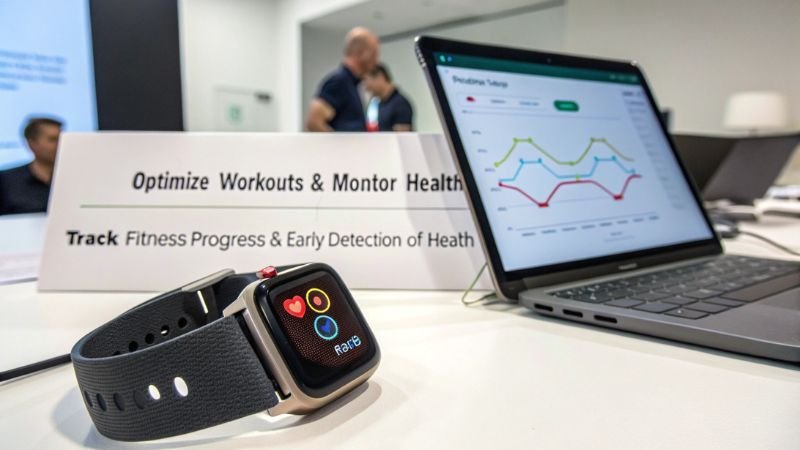
The Role of Motion Sensors in Fitness Tracking
Accelerometers and gyroscopes work together11 to provide a comprehensive picture of user activity. Here’s how they enhance fitness tracking:
Step Counting and Distance Tracking
Accelerometers detect motion patterns associated with walking or running, accurately counting steps and measuring distance12 traveled. This data is crucial for setting and achieving fitness goals.
Activity Recognition
These sensors differentiate between various activities13, such as walking, running, cycling, or swimming. This allows users to track specific workouts and receive tailored feedback.
Motion Analysis
Gyroscopes add depth to motion analysis14 by measuring orientation and rotational movements. This is essential for activities that involve complex movements, providing more accurate data for performance improvement.
Gesture Control
Advanced gyroscopes enable gesture control features15, allowing users to interact with their smartwatch through hand movements. This enhances the overall user experience by making the device more intuitive and user-friendly.
How Can GPS Sensors Help Sellers Appeal to Outdoor Enthusiasts?
GPS sensors are a must-have for outdoor enthusiasts who rely on accurate location tracking for their activities. They provide essential data that enhances the functionality and appeal of smartwatches.
GPS sensors offer precise location tracking, route mapping, and performance metrics, making smartwatches indispensable for runners, hikers, and cyclists.
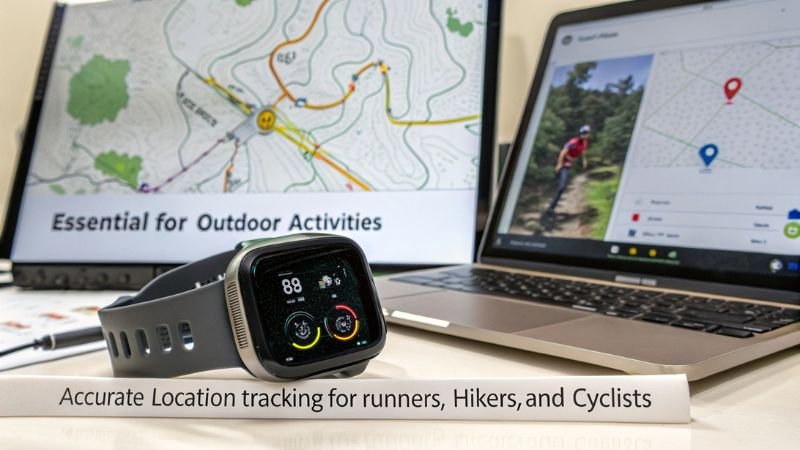
Meeting the Needs of Outdoor Enthusiasts with GPS
Outdoor enthusiasts16 seek smartwatches that can keep up with their active lifestyles. Here’s how GPS sensors cater to their needs:
Route Mapping and Navigation
GPS sensors enable route mapping17, helping users navigate unfamiliar trails or paths. Turn-by-turn navigation is particularly useful for hikers and runners exploring new areas.
Distance and Pace Tracking
Accurate distance and pace tracking are essential for runners and cyclists aiming to improve their performance. GPS data provides real-time feedback on speed and distance covered.
Performance Analysis
GPS sensors facilitate detailed performance analysis18, allowing users to review their routes, identify areas for improvement, and set new fitness goals based on their tracked data.
Safety Features
For outdoor activities, safety is paramount. GPS sensors can enable features like location sharing, emergency alerts, and fall detection19, providing peace of mind to users during their adventures.
Why Are SpO2 Sensors Becoming a Top Selling Point in Wearables?
SpO2 sensors are gaining traction in the wearable market, offering valuable health insights that appeal to a wide range of customers.
SpO2 sensors measure blood oxygen levels, providing critical health data that enhances the functionality of smartwatches and fitness trackers, attracting health-conscious buyers.

The Growing Importance of SpO2 Monitoring
SpO2 sensors20 provide insights that go beyond traditional fitness tracking, making them a valuable addition to smartwatches and fitness trackers:
Respiratory Health Monitoring
SpO2 sensors monitor blood oxygen levels, helping users track their respiratory health21. This is particularly useful for individuals with respiratory conditions or those who engage in high-altitude activities.
Sleep Quality Analysis
By measuring blood oxygen levels during sleep, SpO2 sensors can provide data on sleep quality22 and detect potential sleep disorders like sleep apnea, offering users a more comprehensive view of their health.
Fitness and Recovery
SpO2 data23 helps users understand how their bodies respond to exercise, aiding in optimizing workouts and improving recovery times. This can lead to more effective training regimens and better overall fitness outcomes.
Health Alerts
SpO2 sensors can alert users to abnormal blood oxygen levels24, prompting them to seek medical attention if necessary. This proactive health monitoring enhances the perceived value of the smartwatch, making it a crucial tool for personal health management.
What Makes Temperature Sensors an Emerging Trend in Fitness Trackers?
Temperature sensors are the latest innovation in fitness trackers, offering unique data points that enhance the overall functionality and appeal of these devices.
Temperature sensors provide real-time monitoring of skin or ambient temperature, offering insights into user health and environmental conditions, thereby attracting a tech-savvy audience.
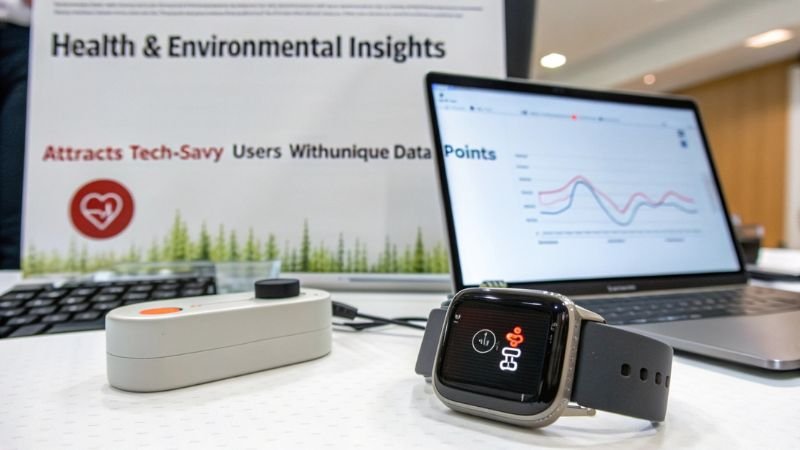
The Benefits of Temperature Monitoring
Temperature sensors25 add a new dimension to fitness tracking, providing valuable data that can be used for various health and performance metrics:
Skin Temperature Tracking
Monitoring skin temperature26 helps users understand how their bodies respond to different activities and environments. This can aid in optimizing workout intensity and preventing overheating.
Environmental Adaptation
Temperature sensors can detect ambient temperature changes27, allowing users to adjust their activities accordingly. This is particularly useful for outdoor enthusiasts who need to adapt to varying weather conditions.
Health Indicators
Changes in skin temperature can be indicators of overall health28. For example, sudden drops in temperature may signal illness or fatigue, prompting users to take necessary precautions.
Enhanced Fitness Insights
Combining temperature data29 with other fitness metrics like heart rate and activity levels provides a more comprehensive view of user performance and well-being, enhancing the overall value of the fitness tracker.
How Do ECG Sensors Differentiate Premium Smartwatches for Tech-Savvy Customers?
ECG sensors represent the pinnacle of health monitoring technology in smartwatches, offering advanced features that set premium models apart from the competition.
ECG sensors provide detailed heart activity insights, enabling the detection of irregular heart rhythms and enhancing the smartwatch’s appeal to tech-savvy and health-focused customers.
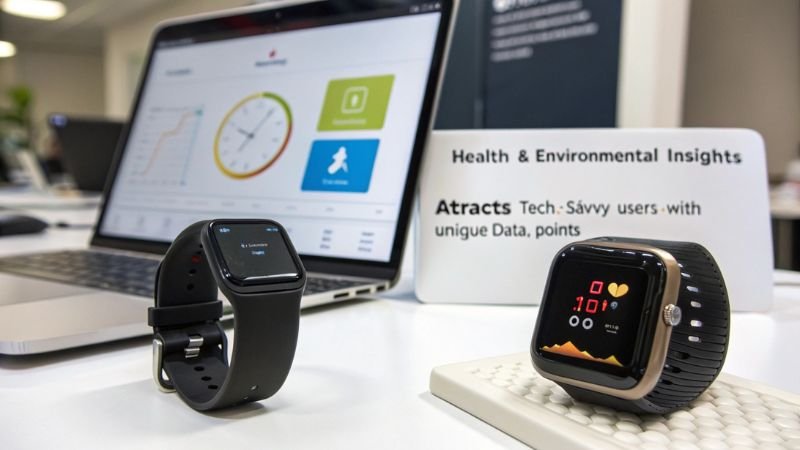
The Advanced Capabilities of ECG Sensors
ECG sensors elevate smartwatches by offering medical-grade heart monitoring30 capabilities, appealing to a niche but growing segment of health-conscious and tech-savvy users:
Irregular Heart Rhythm Detection
ECG sensors can detect irregular heart rhythms31 such as atrial fibrillation, providing users with critical health information that may require medical attention.
Comprehensive Heart Health Insights
Beyond basic heart rate monitoring, ECG sensors offer detailed insights into the electrical activity of the heart, allowing users to track and analyze their heart health over time.
Integration with Health Platforms
Premium smartwatches with ECG sensors often integrate with health platforms and medical apps32, enabling users to share their heart health data with healthcare professionals for better diagnosis and treatment.
Enhanced User Trust and Credibility
Offering ECG sensors positions your smartwatches as advanced and reliable health monitoring devices33. This builds trust with customers who seek high-quality, medically accurate wearables.
Marketing Advantages
ECG sensors provide a strong selling point for premium smartwatches34, allowing you to target a specific demographic that values advanced health features and is willing to invest in top-tier devices.
Conclusion
Focusing on the right sensors can transform your smartwatch and fitness tracker offerings, catering to a wide range of customer needs and driving sales. By prioritizing essential sensors like heart rate monitors, SpO2, accelerometers, gyroscopes, GPS, temperature sensors, and ECGs, you can enhance the functionality and appeal of your products. Understanding the unique benefits each sensor provides and effectively marketing these features will help you attract health-conscious buyers, fitness enthusiasts, outdoor adventurers, and tech-savvy customers alike. Stay ahead of the competition by continually refining your sensor offerings based on customer feedback and emerging trends, ensuring your smartwatches and fitness trackers remain relevant and desirable in a rapidly evolving market.
-
What are the key sensors in smartwatches and their uses? – Learn about the essential sensors used in smartwatches, such as heart rate monitors, SpO2 sensors, and GPS, and how they improve user experience and functionality. ↩
-
How do heart rate monitors in wearables improve fitness tracking? – Discover how heart rate monitors work and why they are critical for tracking cardiovascular health and optimizing exercise routines. ↩
-
What are the benefits of SpO2 sensors in wearables? – Understand the importance of SpO2 sensors in measuring blood oxygen levels and their impact on health monitoring for fitness enthusiasts and wellness seekers. ↩
-
How do accelerometers and gyroscopes enhance fitness analytics? – Find out how these motion sensors work together to provide accurate step counting, activity recognition, and detailed fitness insights in wearables. ↩
-
How does GPS improve outdoor activity tracking in smartwatches? – Explore the role of GPS in wearables, including benefits for outdoor sports like running, cycling, and hiking through features like route mapping and distance tracking. ↩
-
What makes ECG sensors a standout feature in premium smartwatches? – Discover the advanced health monitoring capabilities of ECG sensors, including how they detect irregular heart rhythms and enhance smartwatch functionality. ↩
-
How do heart rate sensors improve workout efficiency? – Learn how real-time heart rate monitoring helps users optimize their workouts by ensuring they stay within target zones for maximum efficiency and safety. ↩
-
What health conditions can be detected with heart rate sensors? – Explore how heart rate sensors in smartwatches can identify irregular heart rhythms or other health issues and encourage timely medical intervention. ↩
-
How does heart rate data enable personalized fitness plans? – Understand the role of heart rate monitoring in creating customized fitness plans that align with individual goals and capabilities. ↩
-
What is heart rate variability, and how does it measure stress levels? – Find out how heart rate sensors measure heart rate variability and how this data can be used to monitor and manage stress effectively. ↩
-
How do accelerometers and gyroscopes work in wearables? – Learn how these motion sensors function and contribute to accurate fitness tracking by detecting movement, orientation, and rotation. ↩
-
What is the importance of step counting and distance tracking in fitness? – Discover how accelerometers provide accurate step and distance measurements to help users set and achieve their fitness goals. ↩
-
How do motion sensors enable activity recognition in smartwatches? – Understand how accelerometers and gyroscopes differentiate between activities like walking, running, and cycling for tailored feedback and performance analysis. ↩
-
What role do gyroscopes play in enhancing motion analysis? – Explore how gyroscopes add depth to motion tracking by measuring orientation and rotation, especially for activities involving complex movements. ↩
-
How does gesture control improve smartwatch usability? – Find out how gyroscopes enable gesture control features, enhancing user interaction and making devices more intuitive to operate. ↩
-
How do GPS sensors in smartwatches support outdoor activities? – Learn how GPS sensors help users track their location, map routes, and measure performance metrics, making them indispensable for outdoor enthusiasts ↩
-
What is the importance of route mapping in smartwatches? – Discover how GPS-enabled route mapping allows users to navigate unfamiliar trails and paths with ease, enhancing the appeal of smartwatches for outdoor adventures. ↩
-
How does GPS data improve fitness performance analysis? – Understand how detailed GPS tracking enables users to review routes and improve their performance through actionable insights. ↩
-
What safety features do GPS sensors enable in smartwatches? – Explore how GPS sensors enhance safety by providing location sharing, emergency alerts, and fall detection during outdoor activities ↩
-
What are SpO2 sensors and how do they work in wearables? – Understand how SpO2 sensors function to measure blood oxygen levels and their significance in wearable devices for health tracking. ↩
-
How do SpO2 sensors monitor respiratory health in smartwatches? – Discover how SpO2 sensors provide insights into respiratory health, particularly for individuals with respiratory conditions or those engaging in high-altitude activities. ↩
-
Can SpO2 sensors detect sleep apnea or other sleep disorders? – Learn how SpO2 monitoring during sleep can help identify potential sleep disorders and provide a more comprehensive view of sleep quality. ↩
-
How does SpO2 data aid fitness and recovery optimization? – Explore how blood oxygen level tracking helps users optimize workouts and enhance recovery, leading to better fitness outcomes. ↩
-
What are the benefits of health alerts from SpO2 sensors? – Find out how health alerts based on blood oxygen levels add value to smartwatches by encouraging proactive health monitoring. ↩
-
How do temperature sensors work in fitness trackers? – Learn how temperature sensors measure skin or ambient temperature and how this data contributes to user health and environmental monitoring. ↩
-
Why is skin temperature tracking important for fitness enthusiasts? – Explore how monitoring skin temperature helps users optimize workout intensity, prevent overheating, and improve performance. ↩
-
How do temperature sensors in wearables detect health issues? – Understand how changes in skin temperature can serve as early indicators of health conditions like illness or fatigue, prompting proactive measures. ↩
-
What are the benefits of ambient temperature detection in smartwatches? – Discover how ambient temperature monitoring helps outdoor enthusiasts adapt their activities to varying environmental conditions. ↩
-
How does combining temperature data with other metrics improve insights? – Find out how integrating temperature data with heart rate and activity levels provides a comprehensive view of fitness performance and overall well-being. ↩
-
How do ECG sensors work in smartwatches? – Learn how ECG sensors capture electrical activity in the heart, offering advanced health monitoring and irregular rhythm detection. ↩
-
What health conditions can ECG sensors detect in wearables? – Understand how ECG sensors identify conditions like atrial fibrillation, providing critical insights for users to act on potential health issues. ↩
-
How do ECG-enabled smartwatches integrate with health platforms? – Explore how ECG sensors connect with medical apps and platforms, allowing users to share data with healthcare professionals for diagnosis and treatment. ↩
-
Why do ECG sensors build credibility for premium smartwatches? – Discover how ECG sensors enhance a smartwatch’s reliability and appeal, establishing trust with tech-savvy, health-conscious buyers. ↩
-
What are the marketing benefits of offering ECG sensors in wearables? – Find out how positioning smartwatches with ECG sensors as advanced health monitoring devices can attract a premium customer segment and improve market competitiveness. ↩


